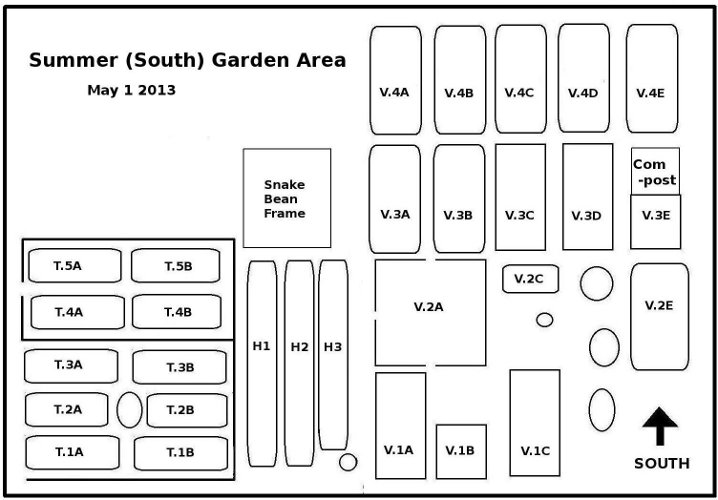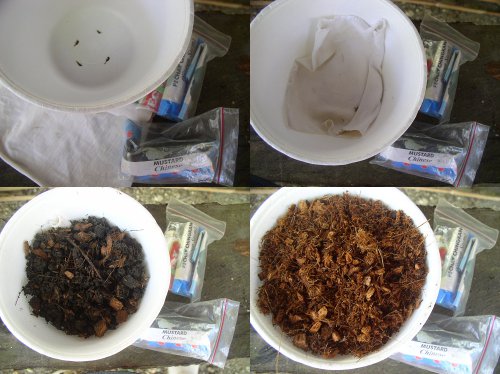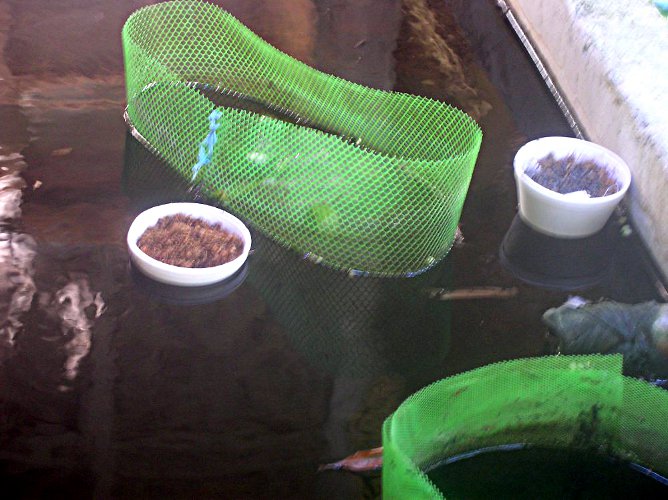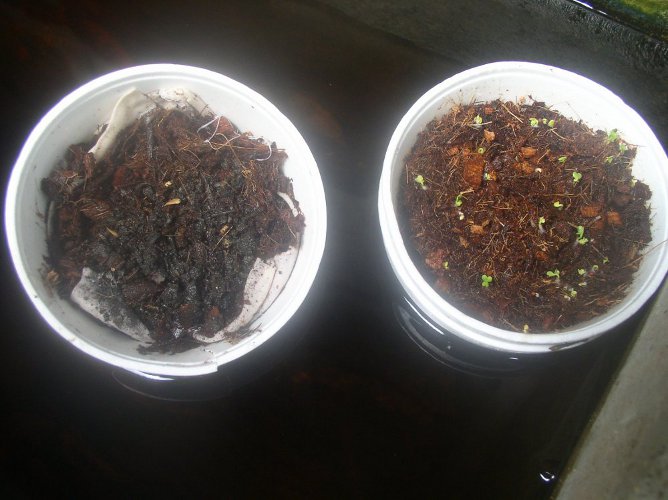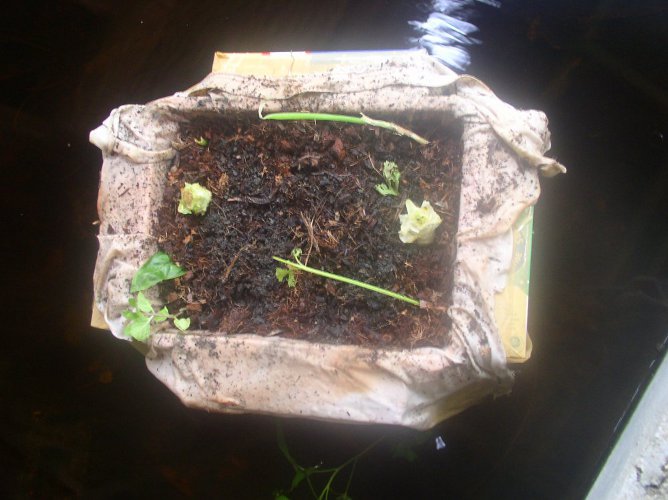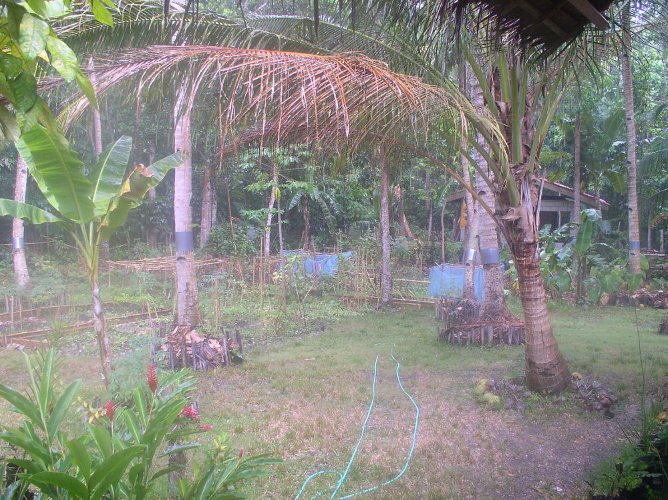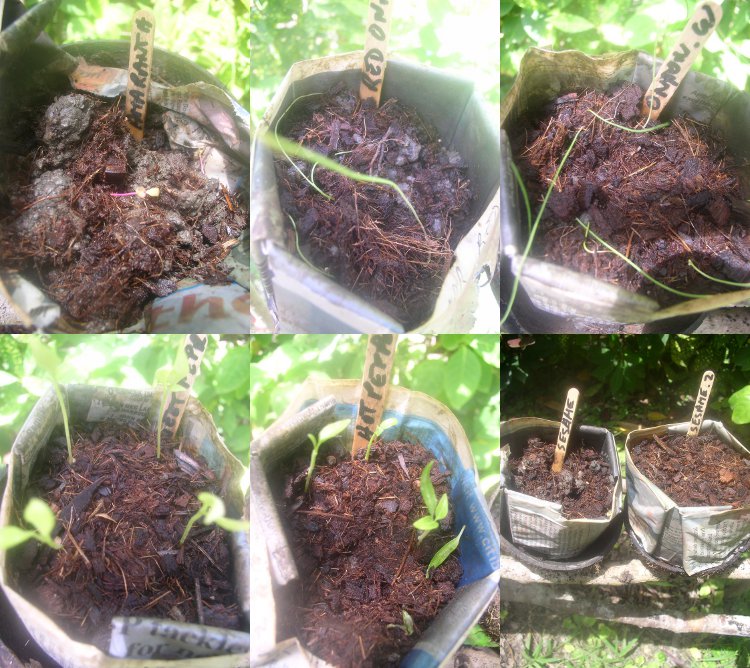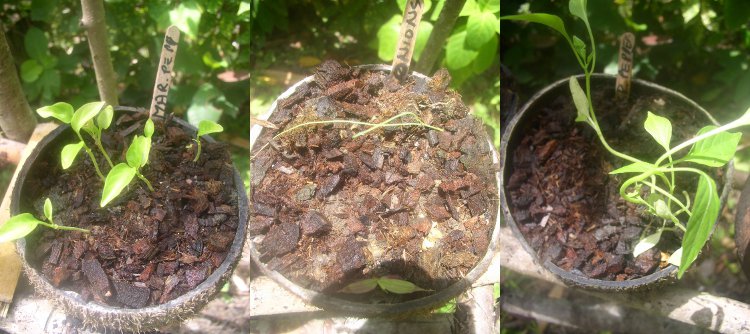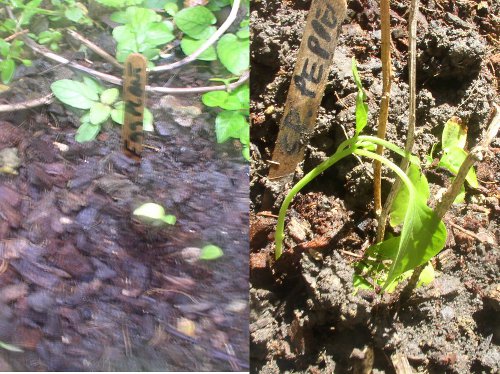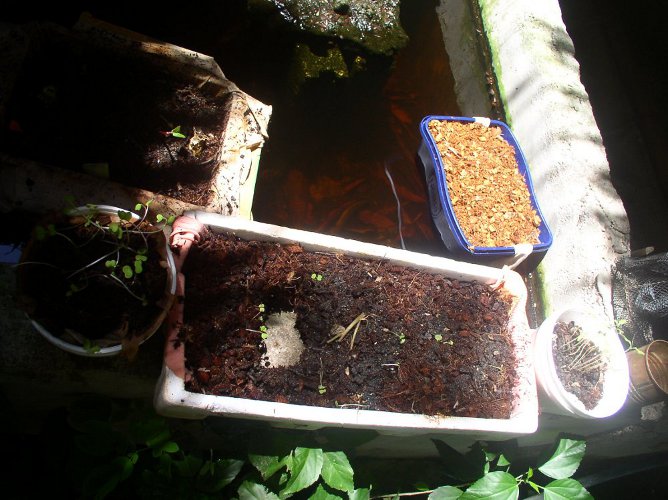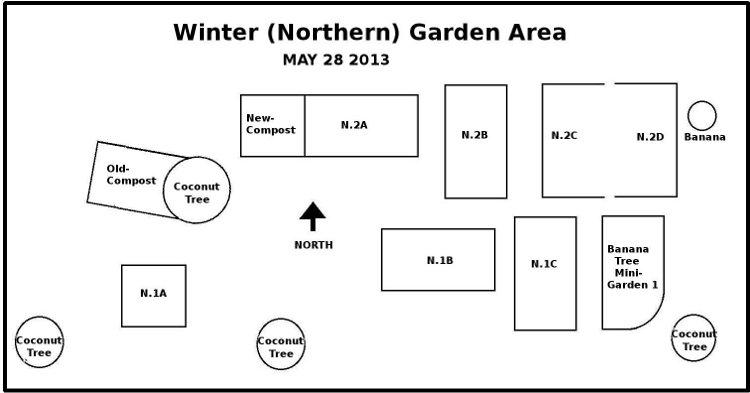New
and original floating gardens were (re) seeded with
Dragon Mix.
Amaranth and Eggplant were
replanted from paper pots -which were falling apart.
A few drops of rain (enough to dampen garden) fell
in the afternoon.
The
osmosis fed mini floating garden was too deep in the
water. Have removed it from the fishpond. A second
bowl is probably required as extra flotation
chamber. We need to buy one next time we go shopping
in town.
12
May:
One of the mini
floating gardens capsized in the night. The
contents were completely lost. I tried using the
extra (bowl which was now free) as an extra
flotation chamber for the "osmosis" system.
However, this made it much too unstable. So the
mini float system doesn't seem viable. A pity
-because the seeds were germinating very nicely
-much better than in the large float.
The tap water supply system is getting better.
This evening I watered the southern garden. With
the recent (slight) rainfall, the garden is
starting to pick up again. We have lost a lot -but
not everything. Certainly, plants seem to survive
better when there are many growing together so
they can provide mutual shade.
Lots of work to do in the garden. Many of the
climbing frames (and the low bamboo fences around
some plots) have started rotting and are falling
over. During the drought, I left everything to
fend for itself (except for emergency watering).
Now we need to develop a minimal maintenance
system.
Most of the transplants seem to be surviving
-except the Amaranth, that has disappeared.
Fatima has been experimenting with extracting
coconut oil by fermenting coconut milk (we'd been
using heat earlier to produce our own oil). She
believes the residue is rich in bacteria which are
good for the garden -so we've been adding some to
the watering can (after letting the water stand
all night to allow any chlorine to escape). After
a couple of waterings, it is difficult to see if
there are any positive or negative effects.
Certainly no negative effects visible yet. We use
about two tablespoons of "curd" for half a
watering can -and leave it for half a day before
using.
15
May:
Some of the
imported seeds already seem to be stressed by the
warm weather and the drought. Some of the recently
ordered seeds may be even more sensitive to heat.
So I have decided to develop the option of
planting them in the shade.
Apart from some shady patches in the "Southern"
garden, the "Northern"
garden also offers shade. Extra shade can be
developed too by planting under and around banana
trees. Perhaps the plants can be of mutual benefit
in improving the soil.
Both of these areas need quite a bit of renovation
(and preparation). Until now, the areas around the
bananas have been uncultivated -and the Northern
garden has been largely left untouched (except for
harvesting some local Yard Long Beans) since
November last year.
Preparing
Mini-gardens under Banana trees
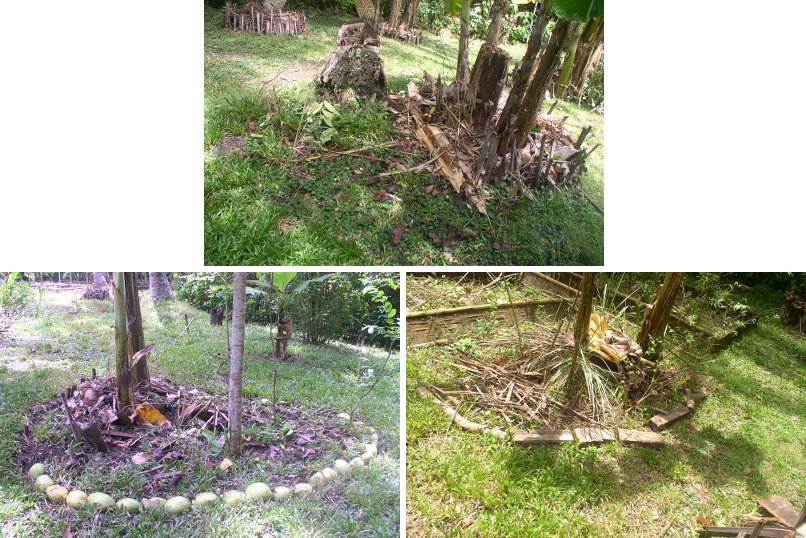
Renovating the
Northern Garden
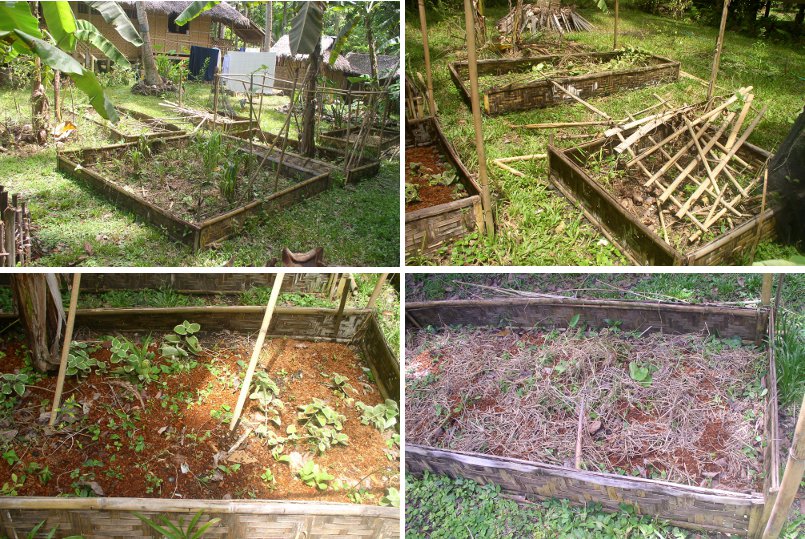
16
May:
Gave the garden a "Birthday" watering
today -before the guests came for a celebratory
lunch. Also finished the border on one of the mini
gardens (lower
left in the three images from 15 May ).
17
May:
Made a new floating
garden from a piece of discarded polystyrene. This
one had two square holes in the bottom, so I
covered the holes with cloth (allowing it to hang
down into the water), filled it with coconut husk
chippings and sprinkled a few seeds on top (Wansoy , Kinchay, Italian Parsley
and Rocket).
The two (surviving)
mini-floating gardens have been grounded, but kept
damp by placing one pot inside another with pond
water inside. Germination seems quite vigorous.
Something is even starting to germinate in the
original floating garden. A mint cutting seems
quite happy there.
Floating
and Ex-floating gardens
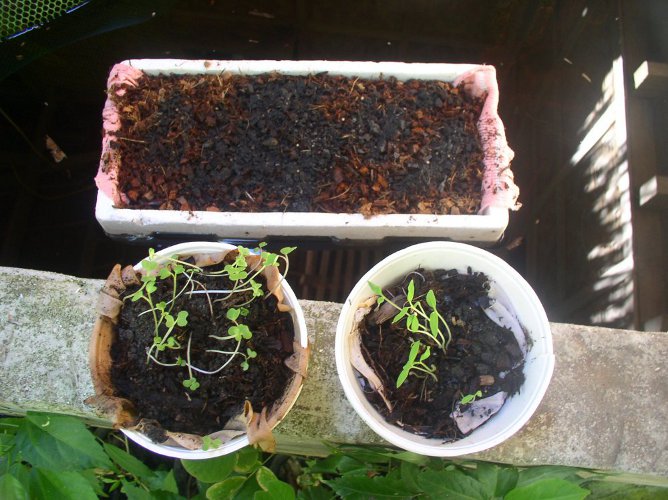 Mixed
success in the original version
Mixed
success in the original version
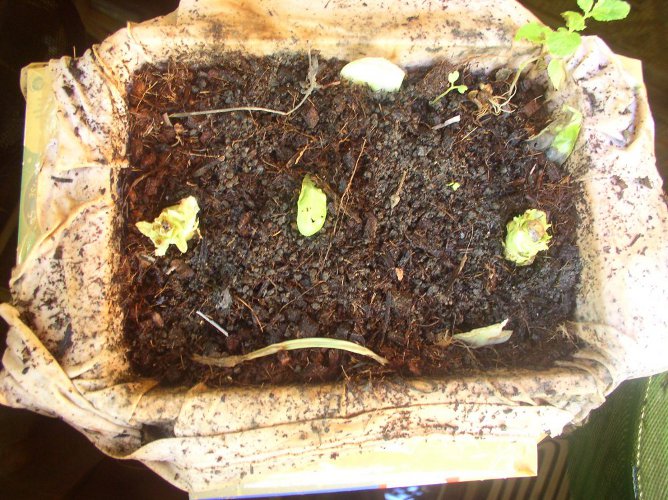
18
May:
Some of the (small)
fruits on the fallen Papaya tree (10 April) did
grow and ripen -but any remaining fruits got
crushed when it finally fell to the ground because
it was no longer supported by the broken climbing
frames. Today, I chopped up the trunk and spread
it around in various places where it is needed as
a slow compost for other trees. This means that
when renovation of the Northern garden is finished,
work can begin on tidying up the Southern garden.
We are still expecting seeds to arrive by post
-ready for planting when the rains get more
established.
26
May:
A Range of
Floating and Non-Floating mini-Gardens
The problem with the floating gardens is getting
them to float in a stable position while providing
the right amount of moisture to the growing medium
(coconut fiber).
The wetter the material becomes, the more heavy it
becomes -and the deeper it settles into the water,
thus encouraging even more water to enter.
The last attempt (from 17 May) quickly became
saturated, and when removed from the water, it
seems the cloth had already rotted away
-leaving a hole which was not apparent while it
was in the water.
A new attempt involves a large empty ice-cream
tub, with no holes - but strips of cloth placed
underneath the chopped coconut fiber and allowed
to hang in the water to provide water by osmosis.
From the way seeds have germinated -it does seem
that, despite the problems, some seeds are very
happy with the nutrients from the fishpond and the
cool environment. Provided their roots do not
become too wet.
Coconut Tree garden
(started 7 April)
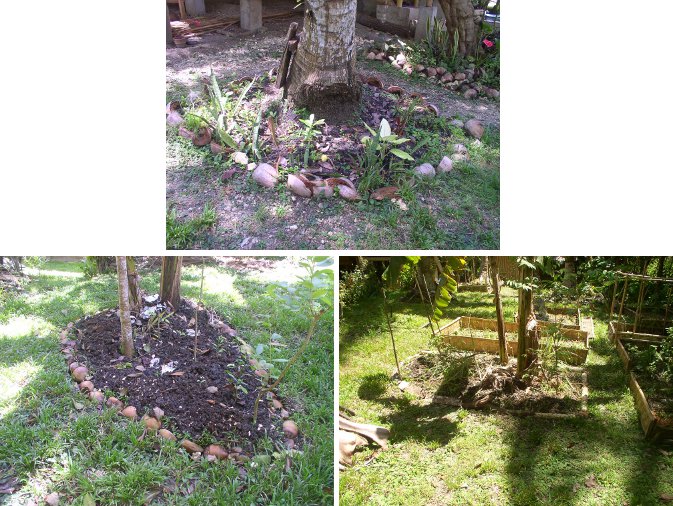 Two new
Banana Tree gardens
The Northern
garden(s) ready for sowing
Two new
Banana Tree gardens
The Northern
garden(s) ready for sowing
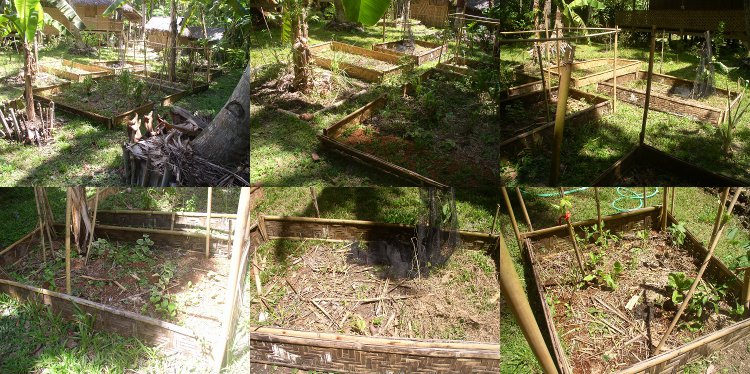 Success and
failure in the Southern garden
Success and
failure in the Southern garden
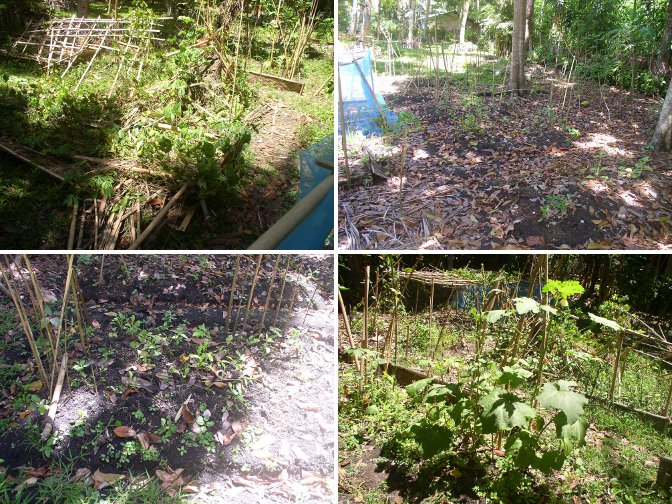 -Plenty of work to do there!
-Plenty of work to do there!
27
May:
